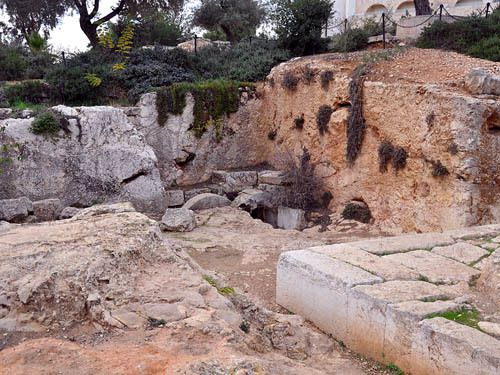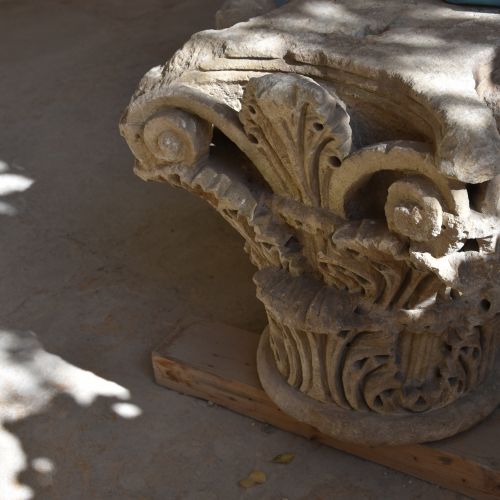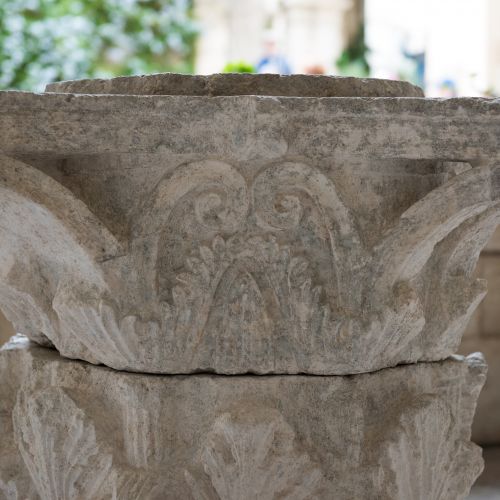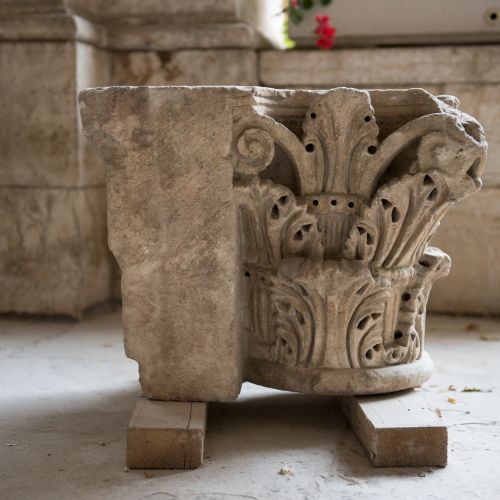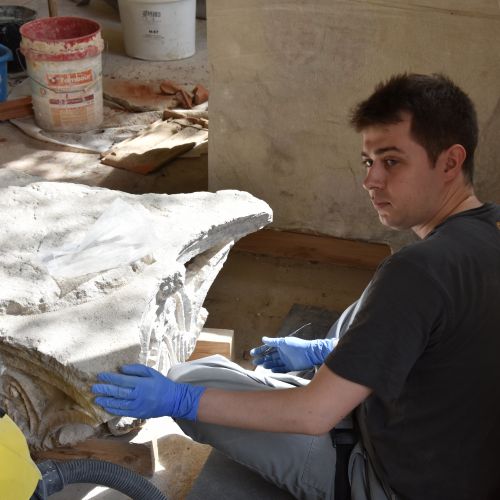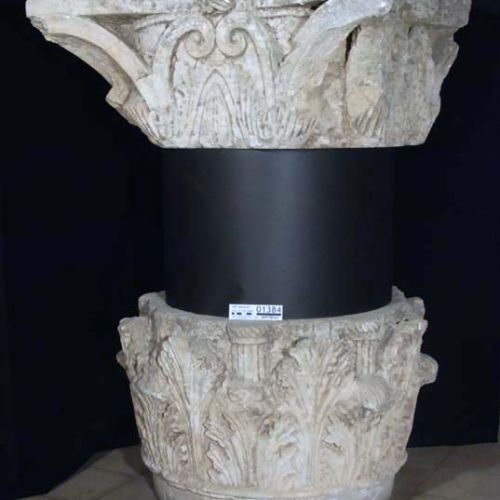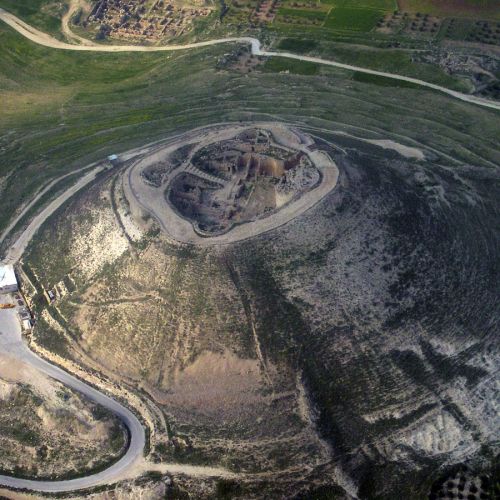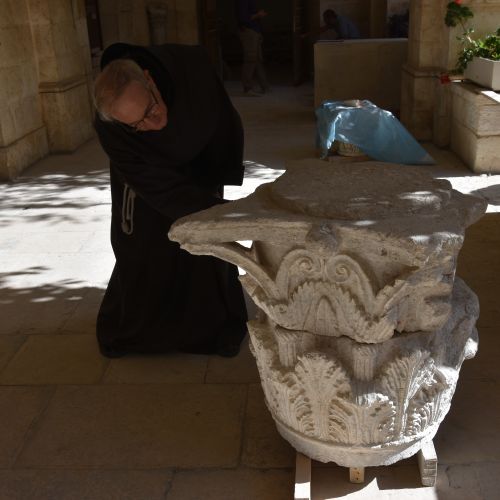Two “new” herodian capitals discovered at Terra Sancta Museum.
During the restoration of artifacts for the new setting of Terra Sancta Archeological Museum, two capitals, not yet dating, have been dated almost certainly to the Herodian period. Even if they come from different areas, both capitals, decorating with acanthus leaves, according to the scholars this would be an example of the luxurious art that flourished in all the Roman Judea between I BC and I AD, when several civil and holy magnificent monuments were built at Herod the Idumaean’s will, thereby called Herod the Great.
- The first capital is dated around I BC and it comes from the “mysterious” Herodian family tomb in Jerusalem. The architectonical element has the Corinthian capital’s peculiar shape made up of leaves row with a central rib and a folded back Y shape, two deep and large engravings on the corners adorned with lateral lobes, triangular loops and sharp points. Some tripartite cauli appear also in the foliage, with a rim decorated with little leaves overturned and divided by small holes. The leaves supporting the volutes have the same features as the underlying ones. The helices ribbon has a rectangular section and an aerial growth and all this area has a fretwork. Instead of the flos abaci there is a leave that comes out from the ones below; it looks like a little palm with perfectly round eyes. The volutes are paired to lateral ones and connected by a horizontal listel. Around the capital’s base there is a thick border used like a junction.The origin of the capital from the Herodion was already determined by Father B. Bagatti in 1939, but influenced by the use of pillar-capital in ¾ of a circle, recently it was ascribed the element to crusader period. As a result of a more accurate analysis, managed by Father E. Alliata (the director of TSM), the find turned out to be an all-round capital, but simply connected to a behind block. Therefore, after 80 years, the hypothesis of the great Franciscan archaeologist results still valuable and, as another Israeli archaeologist commented, this architectural element is really “the most beautiful Herodian capital ever seen”.
- The second is a Corinthian “normal type” capital, dated at I BC and coming from Herodion, the famous palace-fortress built by Herod the Great on a hill not so far from Bethlehem. The two fragments, found by Father V. Corbo during the excavations in the Sixties, have the typical ornaments with Acanthus spinosus’s leaves (the Roman’s one are round and are called “olive’s leaves”). These elements are made by kalathos conical-trunk shape and a ribbon just bended out, on which an abacus, with a lateral and lightly curved moulding, is overlapped. On the base the kalathos is covered by two rows with eight acanthus leaves with the top bent outside: the leaves of the first row are arranged two for each side, the others in the second row are in the middle and in the corners. The cauliculi rise out of the lower leafage and their grooves are with slating rim. The two architectonic elements should belong to the columns of the big facade, because they are all-round capitals even if their rear side is not carved. Before being cleaned, they were considered two different pieces; that’s how the capitals were shown in the Studium Biblicum’s old archaeological museum, but, as father Alliata reports “By overlapping the two fragments, we noticed that they correspond accurately”. This hypothesis is supported by prominent production of capitals in two blocks, that was very common both in the West and in the East until the half of I AD. Furthermore, after the restoration carried out by Mateusz Chorosinski, many unknown grey and white stripes were revealed. This element contributes to making the capital much more precious and majestic.
Even though the age of the great Franciscan excavations seems to be finished, even now the long and hard work of cleaning, setting and cataloging all the precious historical and archaeological Franciscans Friars’ materials still surprise and suggest that it will remain a lot of space for mysteries to be discovered.

